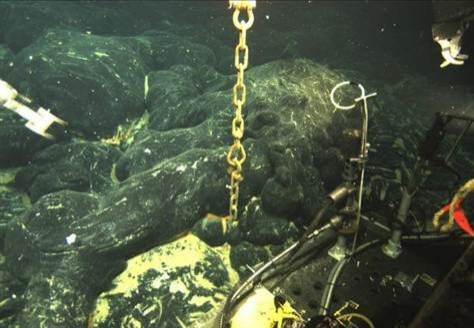Eruption of Undersea Volcano off Oregon Coast Was Predicted

Scientists at Oregon State University discovered a new eruption of undersea volcano Axial Seamount, 250 miles off the Oregon coast.
The Axial Seamount is one of the most active and heavily studied seamounts in the world. In the eruption, which scientists say occurred in early April, the undersea volcano spewed a layer of lava more than 12 feet (4 meters) thick in places. It also opened up deep vents that continue to belch hot water and microbes from deep inside the earth into the ocean.
What makes the find even more intriguing is that scientists had forecast the eruption starting five years ago. That makes this the first successful forecast of an undersea volcano.
Up until now, predicting when volcanoes would erupt has been a mix of science and educated guesses. However, in this study, scientists were able to forecast the Axial Seamount's eruption based on actions leading up to a 1998 blast.
"Their prediction was that based on the 15 centimeters per year inflation rate, they would hit that point where it would be ready to erupt before the year 2014," David Butterfield, an oceanographer working on the project, explained to MyNorthwest. "The theory was that when it re-inflated back to that same level, refilling the magma chamber with magma, then it should be ready to re-erupt."
The April 2011 eruption confirmed their theory.
Though the scientists had predicted an eruption, the timeframe they had set was between 2011 and 2014. So, when they attempted to recover instruments they'd left behind to monitor the peak a year earlier, they were surprised.
"At first we were really confused, and thought we were in the wrong place," Bill Chadwick, a geologist with Oregon State University, told Fox12 Oregon. "Finally we figured out we were in the right place but the whole seafloor had changed, and that's why we couldn't recognize anything. All of a sudden it hit us that, wow, there had been an eruption. So it was very exciting."
The eruption actually changed the geology of the landscape.
"So far, it is hard to tell the full scope of the eruption because we discovered it near the end of the expedition," Chadwick said. "But it looks like it might be at least three times bigger than the 1998 eruption."
The eruption has had a unique effect on the biological communities as well. Chadwick explained to Science Daily:
"When eruptions like this occur, a huge amount of heat comes out of the seafloor, the chemistry of seafloor hot springs is changed, and pre-existing vent biological communities are destroyed and new ones form. Some species are only found right after eruptions, so it is a unique opportunity to study them."
Chadwick along with Scott Nooner, of Columbia University have monitored Axial Seamount for over a decade and published a paper in the Journal of Volcanology and Geothermal Research in 2006 stating their predictions.
Information on subsea volcanoes was and still is very sparse. Though technology has improved, getting to the underwater peaks is often the biggest obstacle.
Scientists warn that while the successful prediction was a good start, it isn't enough to forecast what the future holds.
Nevertheless, Axial Seamount is now the only volcano on the seafloor whose surface deformation has been continuously monitored throughout an entire eruption cycle.
View footage of the Axial Seamount below:
© Copyright IBTimes 2024. All rights reserved.






















